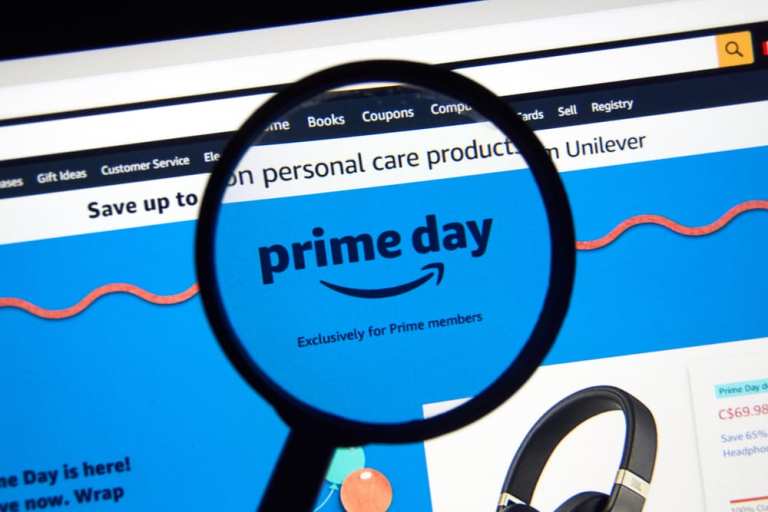What began in 2015 as a birthday party for Amazon has ballooned six years later into an industry-wide tsunami of sales, with retailers big and small trying to reap the benefits of Prime Day or risk missing out on what has become one of the largest shopping events of the year.
The original goal of Prime Day, according to Amazon, was to “offer a volume of deals greater than Black Friday” – and by nearly any metric, the company has succeeded. Over $12 billion in sales are expected in the U.S. during Prime Day and competing sales events, such as those held by Walmart, Best Buy, Target and others; internationally, eMarketer predicts that Amazon alone will take in over $11.5 billion in sales.
Nearly half of consumers now expect other retailers to offer online deals because of Prime Day, according to Adobe’s Digital Economy Index, and 33 percent of consumers say they will be spending money with other retailers besides Amazon on Prime Day. Consumer expectations “will ensure that Prime Day sales days will drive halo-effect gains” for other retailers, Adobe Analytics said, particularly those with over $1 billion in sales.
Even those who don’t sell on Amazon or Walmart marketplaces are powerless to fight an industry phenomenon that has grown too big to ignore. eBay is offering Fourth of July savings a full two weeks prior to the U.S. national holiday, as are several shops listed on Etsy.
A Focus on SMBs
Prime Day and its rival sales aren’t just about who’s the biggest, though — 34 percent of consumers told Adobe Analytics that they prefer to buy from small businesses on days like Prime Day.
Advertisement: Scroll to Continue
In fact, small businesses are a centerpiece of the story that Amazon is telling on Prime Day. Of the over two million deals listed on the Amazon website, the eCommerce giant says that more than one million come from small and medium-sized businesses. Amazon also says it plans to spend $100 million this year to promote small-business selling on the site.
Amazon said on Monday (June 21) that 2.5 million customers bought goods from select small businesses in the two-week run-up to Prime Day, receiving a $10 coupon to use during the two-day sales event. It’s unknown how many customers have redeemed their coupons so far, but in 2020, Amazon said that a similar promotion generated $900 million in sales for the participating small and medium-sized businesses.
Some third-party Amazon sellers, many of whom are small and medium-sized businesses, told CNBC that they don’t plan to discount their products, but will still use Prime Day as an opportunity to get in front of the 58 percent of consumers who will be online during the sales event, according to Adobe. Some, such as artisan crafts and gifts seller Demdaco, invested in advertising to pique consumers’ interest; others, such as luxury lingerie and sleepwear brand Cosabella, held sales ahead of Prime Day to set themselves apart from Amazon.
“On Prime Day, people are looking in spades,” said Chris Bell, chief executive of third-party shop operator Perch, according to CNBC. “So even if you don’t do anything on sale, you usually still get a little bit of a halo effect.”
Amazon’s Long Reach
To be sure, Amazon, with its $1.7 trillion market value, is a very big target and has amassed plenty of enemies — including Walmart, as well as long-running critics such as Vermont Sen. Bernie Sanders, who used Prime Day as an opportunity to criticize Amazon’s treatment of its workers and the net worth of founder Jeff Bezos.
Other groups trying to take a stand include the American Booksellers Association, which launched its “Boxed Out” marketing campaign for the second Prime Day in a row in order to highlight the adverse impact that Amazon has had on local, independent retailers.
And yet, Amazon has created consumer expectations – for things like free two-day shipping – that spill over throughout the industry, leaving rivals large and small with little choice but to match it or be left out. Etsy, for example, offers free shipping on purchases over $35 from a single shop, and experts say that free shipping is no longer a perk, but a necessity for online retail.
Even Prime Day itself is a beacon that can’t be ignored, and it remains to be seen how Prime Day could impact major sales events later this year. Only time will tell whether the pre-summer record sales actually represent growth or simply a shift in demand from August’s back-to-school discounts.
If past experience is to be trusted, though, these massive pre-summer savings will be an additive. When Prime Day 2020 was postponed from July to October because of COVID-19, many feared it would mean lower sales on Black Friday and Cyber Monday. In reality, however, a mid-October Prime Day, alongside the myriad simultaneous sales events, extended the holiday shopping season by nearly a month and a half.




